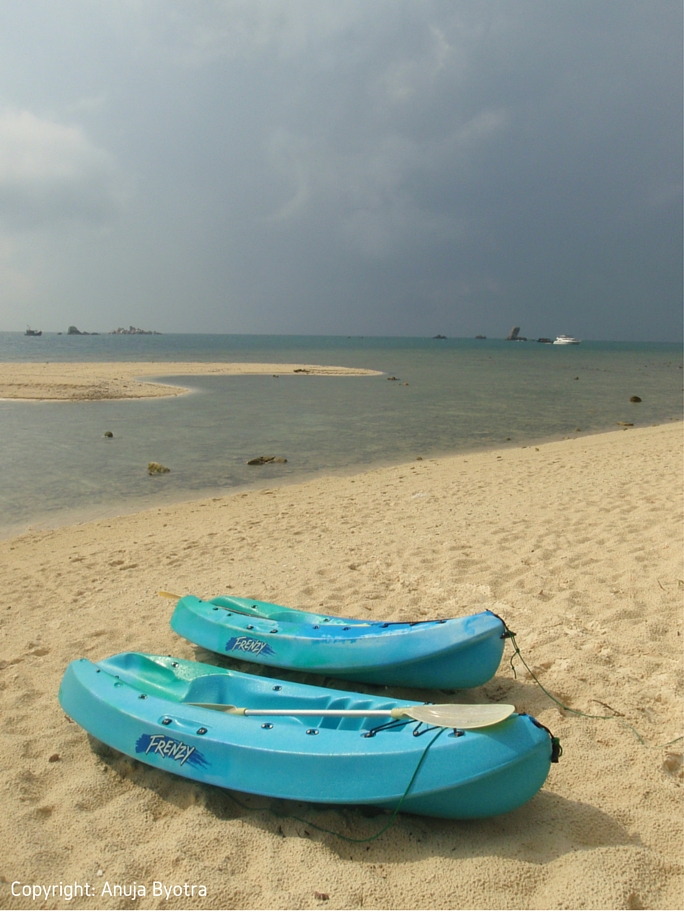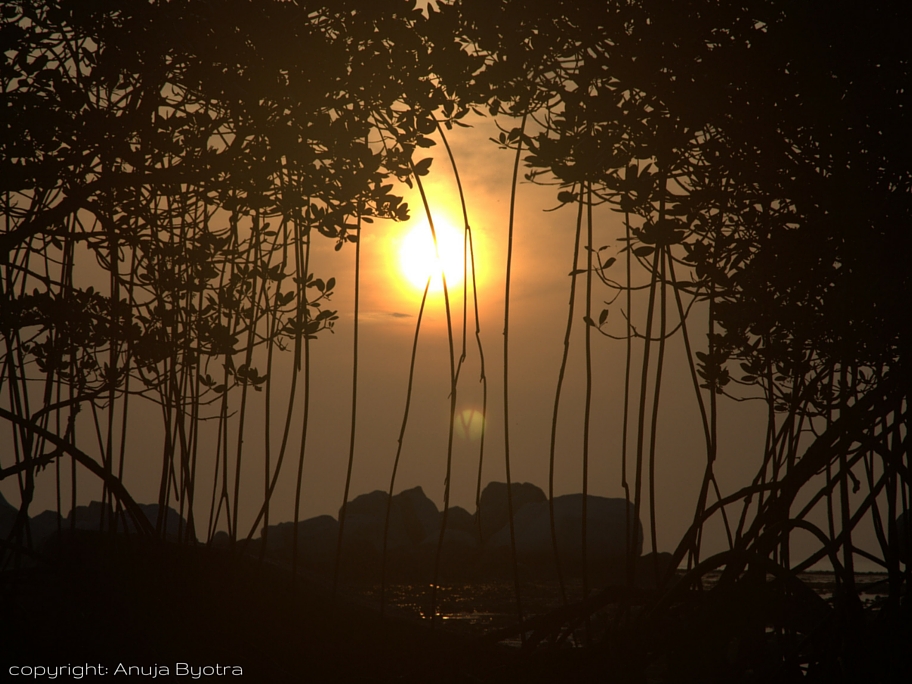Published 7 September 2015 ● Last Updated on 8 October 2020
The first thing that struck me when our boat touched the sand bank of Nikoi Island was disbelief. Here I was, merely half an hour on a boat ride from Bintan, but the grey seas from the beginning of my journey had nothing in common with the palette of waters I now gently rocked over. I was surrounded by sparkling greens in the midst of deep blues, the colors calmly revealing live corals hidden beneath. And in front lay a wide spread of, seemingly, white talcum powder.
So I got off the boat and rushed to the bar.
No, not to drink; regular hotels have receptions and check-in forms, but Nikoi boasts a thatched shack that doubles up as the check-in desk.

Over welcome drinks and friendly chatter, the barman busied himself to introduce me to the island’s rhythm, charms and alcohol stock. At the corner, creating background vocals, excited children rummaged through a trunk full of pirates and mermaid costumes and props. And soon enough, after thankfully discovering that there would no television and telephones in the room to distract me, I was shuffling through a pile of paperbacks at the ledge. The casual hospitality of Nikoi, aiming to please rather than impress, had already begun.
I had discovered Nikoi through a series of glowing reviews on the web, yet I had my misgivings. Could a place so close to urban and tourist centres – 85 km from Singapore and a mere 10 km from Bintan – be pristine? It is no secret: when it comes to finding unspoiled beauty, isolation is your best bet. The tide of people has deadened the sands and eroded the appeal of several South East Asian beaches.
But Nikoi, fortunately, has held its own. The private island has a relatively short commercialized history; And in terms of travel time, it is further off than the distances suggest.
The nearest international port is the ferry terminal at Bintan, Indonesia (an hour’s journey from Singapore by sea). From there, it takes another hour by road and yet another half hour by boat.
Better yet, the owners of the boutique retreat have embraced sustainable development not as a gimmick that merely postpones laundering towels, but as an operating model. There are only fifteen bungalows on the island, with no plans for expansion despite high occupancy. They are built primarily with locally sourced materials – driftwood and alang alang grass. The layout, with high ceilings and open vistas, ensures that a single fan (strategically placed under the mosquito net) is all one needs for a cool night. There is no air-conditioning, no hair dryers, no electric kettles in the rooms. Even water heating gadgets are absent, replaced by solar heating panels. And, importantly, the community benefits from tourism as the local population is trained and employed in the endeavour.
Accordingly, Nikoi’s award cupboard is bursting and its ecology thriving. The island, measuring just 15 hectares, is less than a quarter the size of Singapore’s Botanic Gardens. Yet it holds remarkable diversity: ringing it are white sand beaches and coral reefs; deeper within lies a rain forest; and at the eastern end, untouched by even so much as a broadwalk, are the mangroves.
With only the long weekend to go through these attractions, I began my holiday with the biggest draw – the reefs. Snorkeling was easily rewarding; even my inexperienced eye spotted tropical species ranging from sea cucumbers and sea urchins to clownfish and copperband butterflyfish. Amongst these live corals, diving enthusiasts will no doubt have more to discover – especially as Riau archipelago (to which Nikoi and its better known neighbours – Bintan and Batam – also belong) houses some shipwrecks.
In this seaside haven, my days fell into the natural order of things: swimming, tanning and massage. Nikoi’s motto appears to be luxury without its trappings. There is no room service – but culinary masterpieces are served against a view that could be a magazine cover, and their thick wooden tabletop would cost a fortune were it available for sale. There are no lifts to the bungalow’s upper level – but the lower level is a spacious lounge with a living area, a massage area, a sunning area, and then some more. There are no bathtubs – but the washroom is equipped with a rainshower, warm water and even a stone sculpture. The list goes on.
Not surprisingly, the weekend was all I needed to rejuvenate. The final day, I woke up early and walked beyond the last bungalows lining the beach. The pathway was nothing more than a patchy trail of trampled grass. The damp smell of the foliage still held the aroma of rain from the evening before. Soon the sea disappeared from view, entirely hidden behind a tree cover, and even the sound of the ocean was muted, overpowered by cicadas and their guitars.
The walk could not have been long, but distracted as I was – surveying the germinating coconuts, their saplings splitting the brown husky shells, and trying to locate the owners of birdcalls I could hear – it took me a while to finally reach the clearing and the perfect picture moment.
Heralding the horizon was an expanse of black rock exposed by low tide, barren of vegetation but teeming with crabs. And beyond it rose the sun, creating a twin in the rock pools below. I had reached a tad late, and the sun’s orange hues had already begun smouldering into yellows, turning brighter as they climbed higher. I clicked away.

As I walked back, I went through the mental checklist I have for rating vacations. Relaxation – yes. Discovery – yes. Exploration – yes. Enough stories and snaps to generate envy – Absolutely yes.



Nikoi Island
7 September 2015Abuja, A lovely write up. Tks very much.